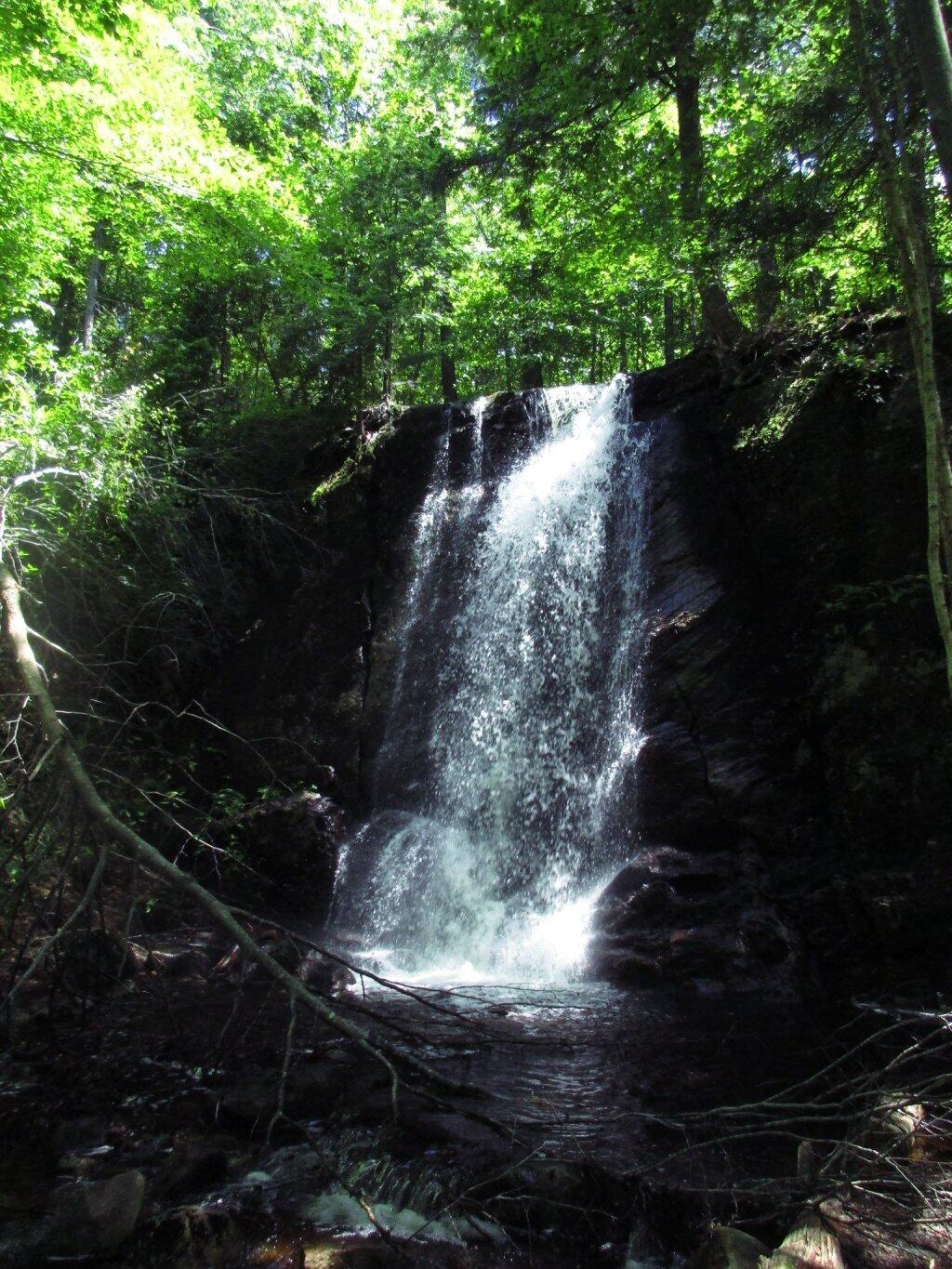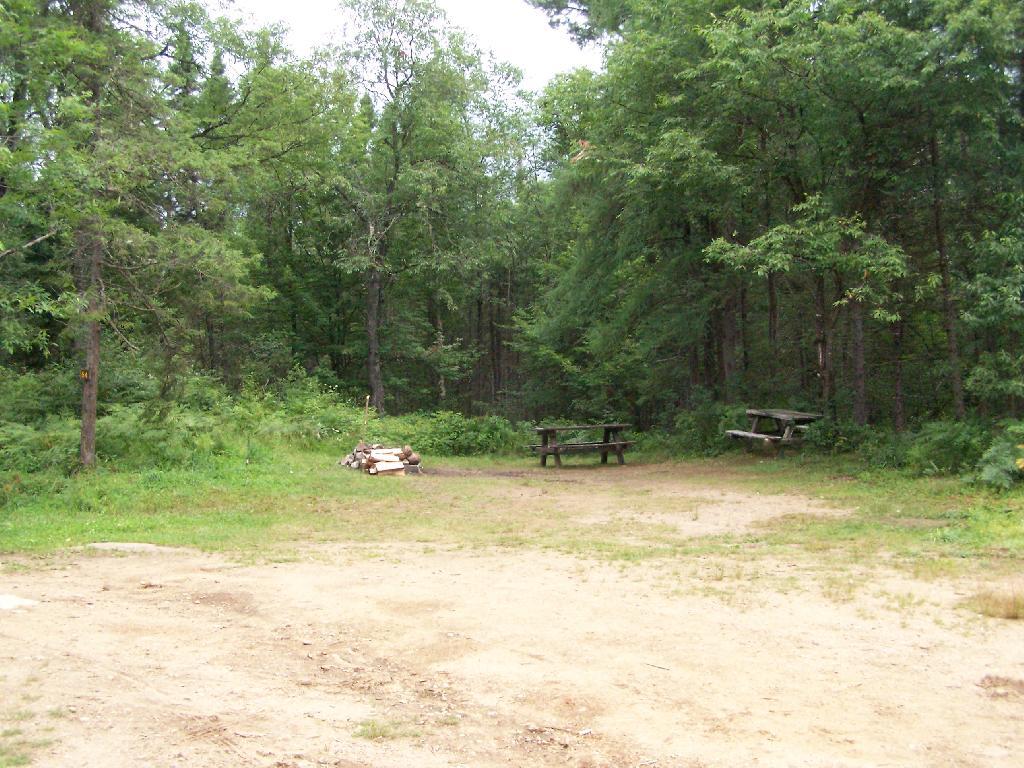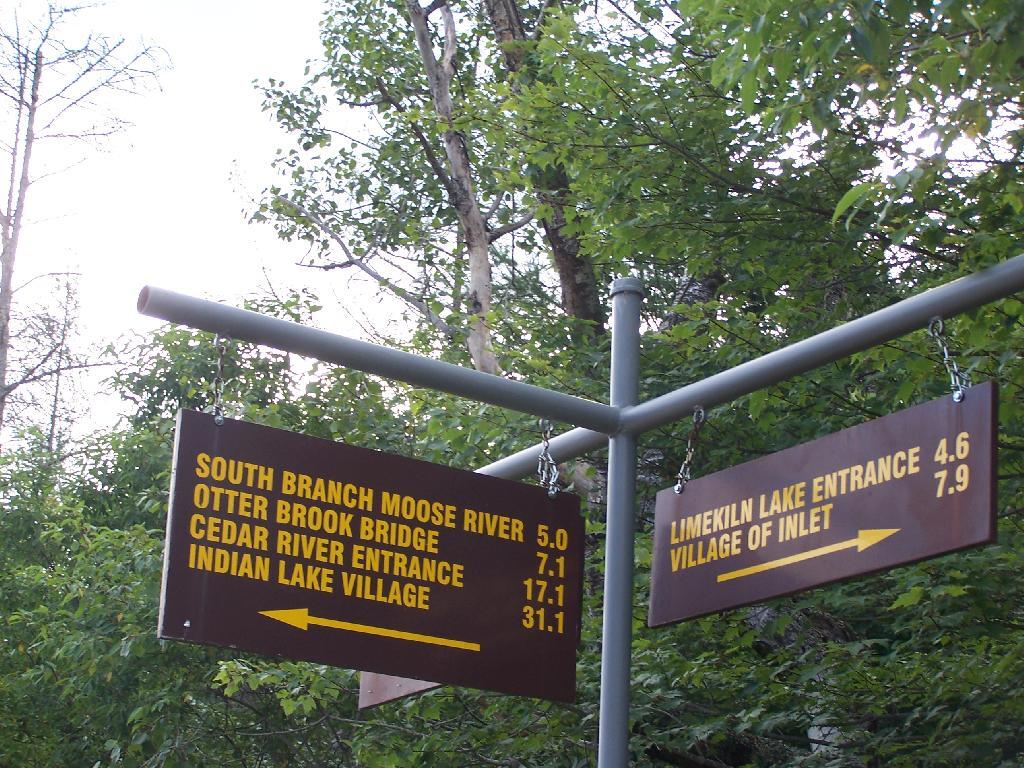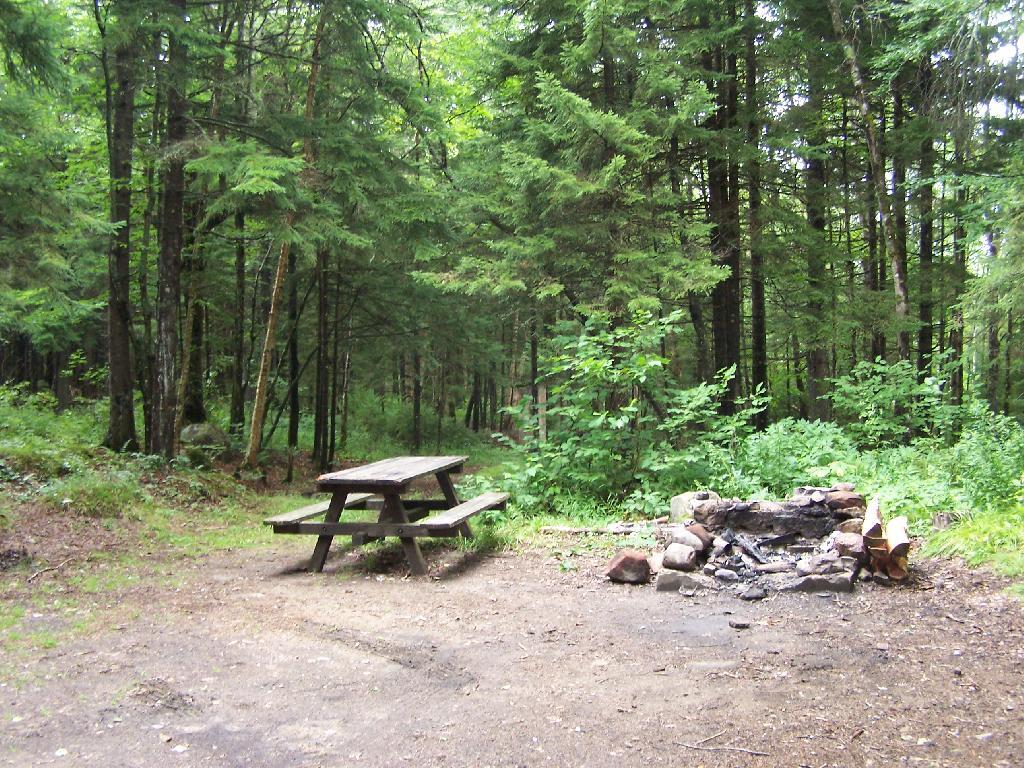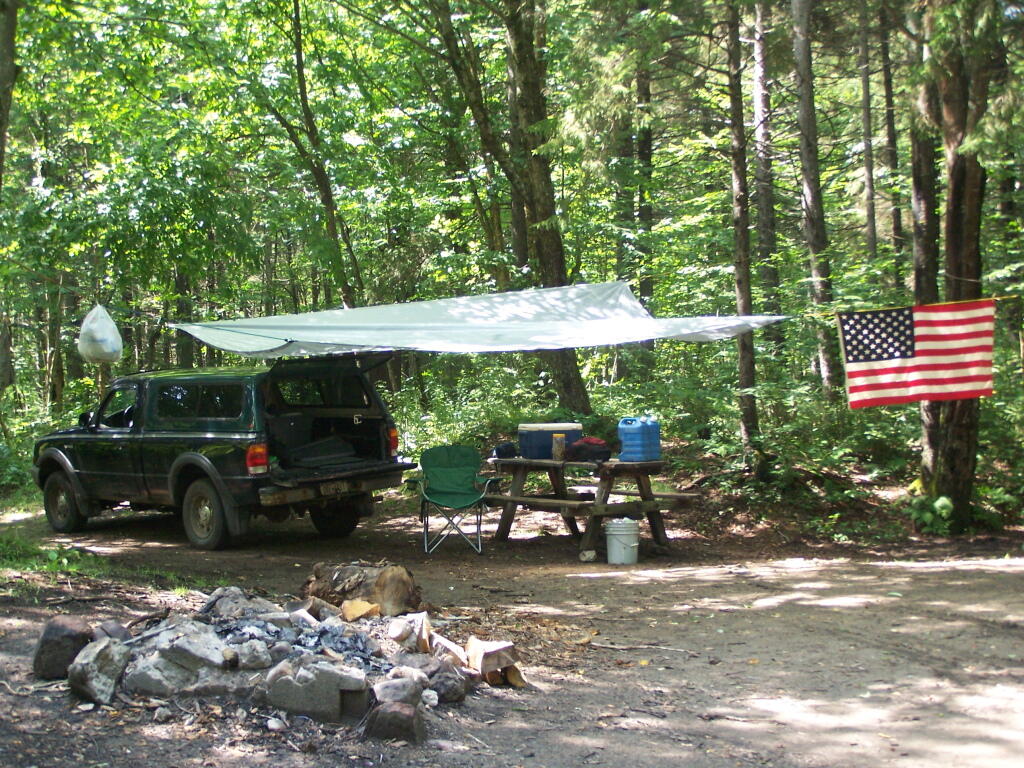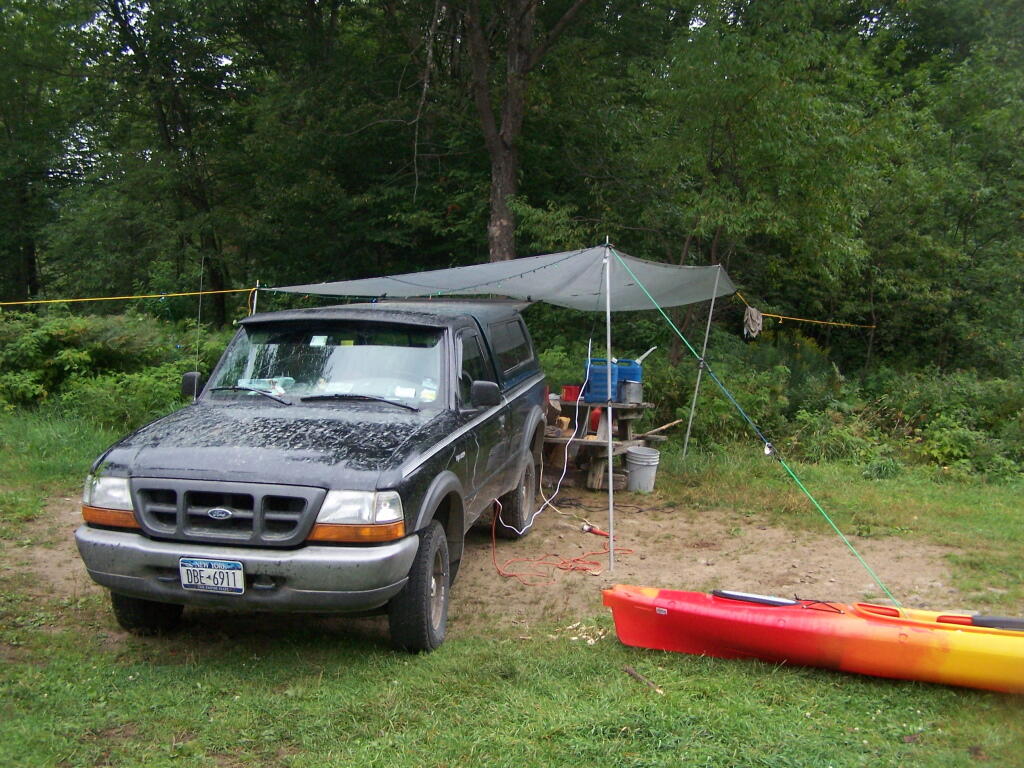Recently, the Adirondack Park Agency adopted several changes to Moose River Plains Wild Forest in the master map of the Adirondack Park. One of the biggest changes was to convert an area around Moose River Plains Road and Red River Road into an “Intensive Use Area” known as the “Moose River Plains Camping Area” (MRPCA), to allow campsites to remain that are within 1/4 mile of each other, which otherwise would violate the Adirondack Park Land State Master Plan (APLSMP) for Wild Forest.
The change is pretty slight, described as in Moose River Plains Intensive Use Area Plan (PDF):
“The proposed MRPCA will look very similar to the existing roadside uses in the MRPWF. The sole purpose for proposing the creation of the MRPCA is to allow roadside camping in higher density than can be allowed under wild forest guidelines. Although the APSLMP will recognize this newly created intensive use area as a campground by definition, the overall management goals include protecting the wild character of both the MRPCA and the MRPWF. The Department intends to manage this area in a manner that is much more reflective of wild forest guidelines, with the exception of the camp site separation distance guideline. The management responsibilities for the MRPCA will remain with the Division of Lands and Forests and will be regulated under those parts of NYCRR 6 Part 190 that are applicable to the adjoining wild forest lands. Due to the close relationship between the MRPWF and the MRPCA any future revisions to either UMP will require an assessment of potential impacts on both units and possibly a revision to both UMPs.”
“Unlike other intensive use area campgrounds in the Park, amenities such as bath houses, playgrounds, and paved drives are not ever going to be considered for the MRPCA. What is envisioned for the MRPCA is up to 150 roadside campsites along approximately 20 miles of roads through the MRPWF. These sites will have fire rings,pit privies and picnic tables as their only amenities. Some of these sites are relatively close to the road, while others are several hundred feet back and are accessed by short driveways. A majority of these sites will be comprised of existing sites, some fairly well separated from other sites and some clustered in small groups. This provides for a variety of camping opportunities depending on what users are seeking. Existing sites that are very close to the road may be relocated to a location that provides better screening or may be converted to parking areas with a walk‐in site located a short distance from the parking area. Any newly constructed sites will be located in a manner to provide vegetative screening between the site and the road.”
The confusing part of this comes into the fact these lands will be considered “Intensive Use”, which is essentially a symonym for “DEC Campground” in APLSMP. While few people read APLSMP, many people buy maps and go onto websites to figure out where they are going to camp.
Map makers, especially those not from the Adirondacks will likely fail to distinguish between the Moose River Plains Camping Area, and a more developed campground like that of DEC Campground Limekiln Lake, DEC Campground Eight Lake, or DEC Campground Indian Lake. Indeed, this what concerns the DEC in the MRPCA plan:
“Although use levels within the current MRPWF have been fairly stable for the past several years, the creation of a new area, even if only by name, may initially result in an increase in camping use of the area.”
“The creation of the MRPCA will create some challenges in educating the public as to what to expect within the area. As the area will not charge fees, nor will reservations be taken, users will be arriving at the area without the benefit of knowing what site they may be camping at. Users will need to drive through the area and locate a site that is suitable for their needs. In the unlikely case that no sites are available, users will need to be educated as to what alternatives exist in the general area. Providing information at the two entrance points, Cedar RiverFlow and Limekiln Lake, will be an important part of informing users of the type of opportunity available in the MRPCA. It will also provide an opportunity to provide information on alternative locations should the MRPCA not meet their expectations. Additional information will be made available on the Department’s website and inthe revised unit brochure for the MRPWF.”
If these changes make it to the DEC website it would be helpful…
Yet, we know the DEC often does not put important information on it’s website, and indeed it seems likely the Division of Operations which operates the Limekiln, Eight Lake, and Indian Lake Campgrounds would fight to avoid including a “free” camping area that could directly compete with their $25 a night sites, that offer only minimally nicer ammenities such as centralized trash dumpsters, flush toilets, and showers. Moose River Plains, if promoted by Division of Lands and Forest could canabalize the business of these other campsites.
People will be in for a surpise if they come up here, looking for an established campground. Roadside campsites are spread out over 20 miles, people are often 30 miles from the nearest gas station. The roads are rough, they can be challenging in places to travel with a car. Without regular patrols and surrounded by vast Wild Forest and Wilderness on four sides, the possibility of people getting lost grows. Already, people get lost up here, but with additional promotion through the name change — and the attraction to those unfamiliar with the Adirondack tradition of roadside camping, it’s only asking for trouble.
The changes to the Moose River Wild Forest may be needed to keep the majority of the camping sites open and compatible with the APSLMP, but it seems as though converting Moose River Plains Road to Intensive Use, and indicating it on maps as such, only will lead to more confusion.
The state should instead admend the Adirondack Park Master Plan:
- Make existing “road-side” legacy campsites less then 1/4 mile separation legal.
- Require only new campsites that are developed to have the 1/4 mile separation.
